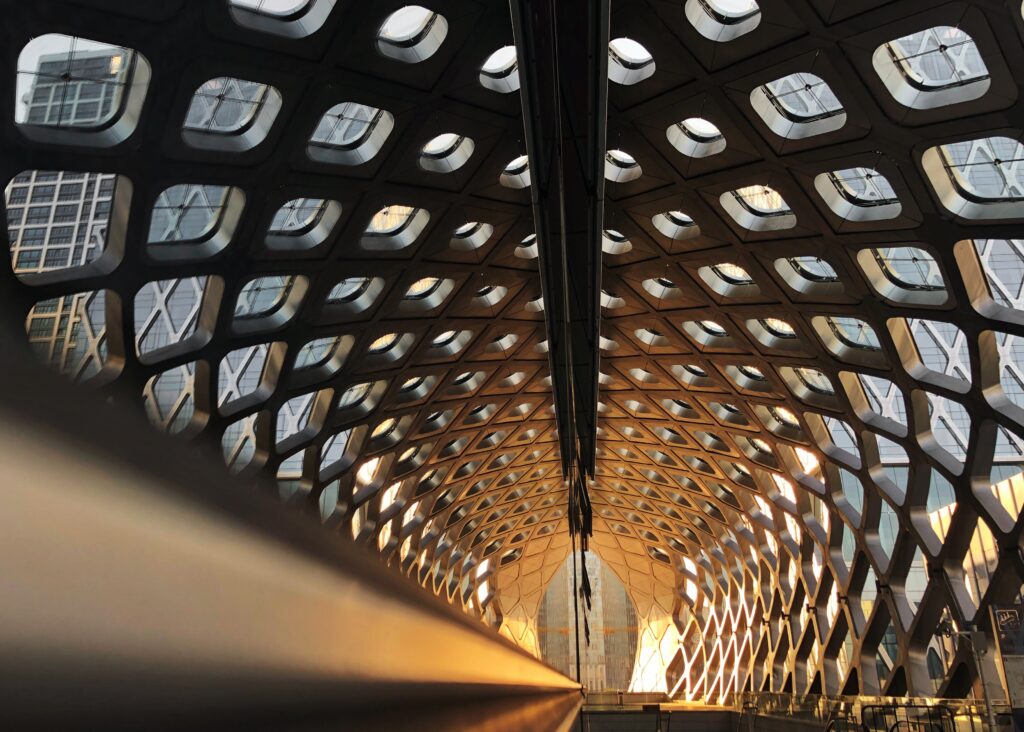In contemporary agreements, it has become customary for parties to include arbitration clauses without fully comprehending the financial implications. Consequently, they often find themselves facing unexpectedly high costs associated with arbitration proceedings, potentially resulting in the abandonment of the process altogether.
However, it is imperative to recognise that arbitration does not inherently have to be prohibitively expensive. This article aims to provide practical considerations for managing arbitration costs effectively.
What are the types of arbitration
There are two (2) types of arbitration, institutional and ad hoc:
- Institutional arbitration involves the resolution of disputes through an established arbitral institution, the most common in Malaysia will be the Asian International Arbitration Centre (AIAC) and the Pertubuhan Arkitek Malaysia (PAM). These institutions provide a structured framework and support for arbitration proceedings.
- Ad hoc arbitration does not involve the oversight or administration of a specific arbitral institution. Instead, parties directly manage the arbitration process.
The choice between institutional and ad hoc arbitrations will depend on factors such as the complexity of the parties, the preference of the parties, and the need for administrative support.
What are the costs involved in an arbitration?
The costs associated with arbitration proceedings encompass various elements, including:
- Arbitral tribunal’s fees: compensation for the arbitrator’s time and expertise in determining the dispute.
- Administrative fees: charges related to the administration of the arbitration proceedings by the arbitral institution, covering services such as case management and support.
- Legal fees: expenses incurred for legal representation and counsel throughout the arbitration process, including preparation, representation, and advisory services.
- Rental fee: costs related to securing a venue for the arbitration hearings, including rental charges for the physical space.
- Expert witness fees: charges related to the appointment of expert witness(es) tasked with evaluating and providing comprehensive reports on the issues presented by the parties.
- Expenses incurred by factual witnesses: reimbursement for travel, accommodation, and other associated expenses of witnesses who provide testimony during the arbitration proceedings.
- Other logistical costs: charges related to transcription services, translation services, mover services, among others.
These elements collectively contribute to the overall costs of arbitration proceedings and are vital considerations for parties involved in dispute resolution.
The AIAC offers a comprehensive fee calculator tool to assist parties in estimating and managing their arbitration costs effectively. This tool, accessible at https://www.aiac.world/fee-calculator provides clarity and transparency regarding anticipated fees for the arbitral tribunal and administrative aspects of arbitration conducted through the AIAC.
Contrastingly, the PAM does not offer a similar fee calculator tool, as its arbitration scale of fees was abolished in 2015.[1] However, the PAM Arbitration Rules (2019 Edition) do outline the computation of the arbitrator’s fees, which depend on factors such as the time spent on tasks such as studying issues and submissions of the parties, conducting hearings, deliberations, and the publication of the award.[2]
It is imperative to note that these costs are contingent upon the amount in dispute. Higher disputed amounts typically result in increased costs due to factors like case complexity and documentation volume. Consequently, greater resources, including legal counsel and administrative support, may be required to navigate and resolve the dispute effectively.
Can I recover the costs incurred at the end of the arbitration?
The short answer is yes, provided you succeed in your claim.
Generally, the arbitrator will adhere to the “costs follow the event” principle, whereby an award of costs aligns with the outcome of the arbitration.[3] In other words, the unsuccessful party in an arbitral proceeding must pay the cost of the arbitration and legal cost to the successful party.
While recovery of costs is possible in arbitration, it is worth highlighting that it is rare for the winning party to be fully compensated for all the costs incurred. Hence, prudent cost management and financial planning remains paramount, echoing the central theme of this article. It must also be borne in mind the potential delays or prolongation in proceedings, which can extend the anticipated timeline and incur additional costs.
What are the ways to manage the costs of arbitration?
Certainly, managing the costs of arbitration requires careful consideration and strategic planning.
Here are a few HOWs to navigate the costs associated with arbitration:
- Drafting arbitration clause carefully
The cornerstone of cost-effective arbitration begins with the drafting of the arbitration clause within the contract. This clause delineates essential details such as the governing law, the location of arbitration proceedings and the number of arbitrators. Parties should exercise diligence in crafting this clause, ensuring clarity and coherence. Ambiguities or consistencies with the arbitration can lead to prolonged disputes and increased legal costs.
Governing law and the location of the arbitration proceedings
For instance, specifying multiple legal systems or jurisdictions within the arbitration clause, e.g. arbitration in Malaysia subject to UK law, may result in heightened legal expenses, as legal advice will likely be necessary from each jurisdiction involved. To mitigate this risk, parties should strive to keep the arbitration clause straightforward and unambiguous.
Selecting a single governing law and jurisdiction can streamline the arbitration process and minimise costs associated with legal consultations and procedural complexities.
Number of arbitrator
In most cases, parties have the freedom to specify the number of arbitrators in their arbitration clauses,[4] with the requirement that the number be uneven, such as a sole arbitrator or a three-member arbitral tribunal.
Choosing a sole arbitrator to adjudicate the dispute typically results in lower costs compared to opting for a three-member tribunal. However, it is not uncommon for one party, even in relatively minor disputes, to insist on a three-member tribunal to escalate costs. This tactical maneuver can be particularly effective when parties have unequal litigation budgets, with the hope that the arbitration will be abandoned by the financially disadvantaged party.
While a three-member panel can offer advantages, parties are advised against pre-determining the number of arbitrators in their arbitration clauses upfront. Instead, it is prudent to leave the issue open until the arbitration clauses are invoked.
Ultimately, a well-drafted arbitration clause serves as the foundation for efficient dispute resolution and cost management throughout the arbitration process. Therefore, parties should not overlook the importance of having a precise and concise arbitration clause.
- Narrowing down the issues for determination
Following the exchange of pleadings, parties gain a clearer grasp of their respective claims, allowing them to identify the key issues that need to be tackled by the tribunal. These issues form the core of the arbitration proceedings.
It is prudent for the parties’ representatives to collaborate on coming up with a list of agreed issues and disputed issues. The aim is to strive to reach agreement on as many issues as possible. Through this collaborative exercise, parties can subsequently refine the terms of reference presented to the arbitrator as fewer issues will be required for the arbitrator’s determination. By narrowing down the issues for determination, it will result in a commensurate reduction in the quantum of dispute, arbitral tribunal’s fee and legal representation fees. This, in turn, reduces the overall cost of arbitration.
In summary, narrowing down the issues for determination not only helps parties focus on the crux of the dispute but also contributes to cost savings by streamlining the arbitration proceedings and reducing legal expenses.
- Making a Calderbank offer
Another effective strategy for managing arbitration costs is through the use of a Calderbank offer, which originated from the English case of Calderbank v Calderbank[5] and is enshrined into Order 22B of the Rules of Court 2012.
This approach allows one party to extend a settlement offer to the other party on a without prejudice basis without involving the arbitral tribunal.[6] By keeping the offer confidential until after the tribunal has made its decision, parties can ensure that the tribunal’s determination remains unbiased by any attempted settlement.
The Calderbank offer operates when the party receiving the offer rejects it and the final arbitral award is less favourable than the offer, then the tribunal may consider the offer when determining costs and expenses.[7] This mechanism provides incentives for the parties to carefully assess the merits of their claims and the potential outcomes of the arbitration process.
Therefore, parties should thoroughly evaluate the strength of their claims and the likelihood of success before deciding whether to accept or reject a Calderbank offer. By strategically utilising this approach, parties can potentially minimise arbitration costs and achieve more favorable outcomes.Top of Form
- Opting for virtual/remote hearings
In the wake of the Covid-19 pandemic, the adoption of virtual or remote hearings has become increasingly commonplace, presenting another avenue for reducing arbitration costs.
One of the most notable advantages of virtual hearings is the elimination of the need for extensive travel and accommodation arrangements. This cost-saving measure applies not only to the parties involved but also extends to arbitrators, witnesses, and legal representatives.
Furthermore, virtual hearings offer logistical convenience and flexibility, enabling smoother coordination of schedules and streamlined communication. This enhanced efficiency can significantly shorten the duration of the entire proceeding, further contributing to cost savings.
Ending Note
We hope that the considerations outlined above offer valuable insights into effectively managing the costs associated with arbitration proceedings. As parties navigate the intricacies of arbitration, it is crucial to prioritise maintaining a healthy cash flow and financial stability.
By implementing strategic cost-saving measures and exercising prudent financial management throughout the arbitration process, parties can better position themselves for success while mitigating the financial burdens often associated with dispute resolution.
Remember, proactive management of costs not only ensures fiscal responsibility but also contributes to the overall efficiency and efficacy of the arbitration process.
Our firm boasts a seasoned team dedicated to providing comprehensive support and assisting clients in navigating the financial implications of arbitration. Should you wish to explore strategies tailored to your specific needs, please contact our Partner, Mr. Kevin Richard Nathan (kevin@nzchambers.com) or Senior Associate, Ms. Elise Tam (elise@nzchambers.com).
Authors: Kevin Richard Nathan & Elise Tam
Published Date: 22 March 2024
[1] Berita Akitek PAM June 2015, Topic: Scale of Minimum Fees (http://www.pam.org.my/images/publications/ba2015/jun2015/Berita-akitek-jun-2015.pdf)
[2] Article 1.0 of the Appendix 1 to the PAM Arbitration Rules (2019 Edition)
[3] Article 42(1) of the AIAC Arbitration Rules 2023
[4] Section 12(1) of the Arbitration Act 2005
[5] [1975] 3 All ER 333
[6] Section 44(3) of the Arbitration Act 2005
[7] Section 44(2) of the Arbitration Act 2005






